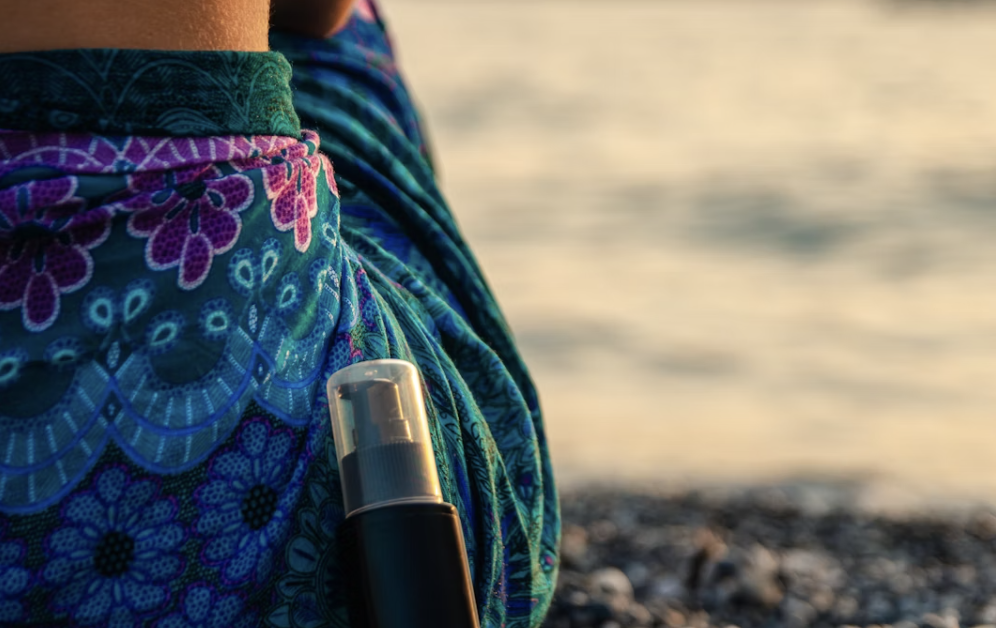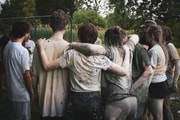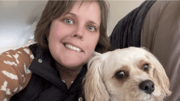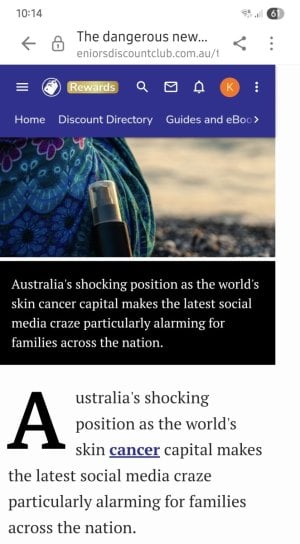
Australia's shocking position as the world's skin cancer capital makes the latest social media craze particularly alarming for families across the nation.
While health authorities have spent decades successfully reducing skin cancer deaths through campaigns like Slip Slop Slap, a concerning new trend is emerging that threatens to undo this progress.
Unapproved tanning products—including drops, gummies, and nasal sprays—are flooding social media platforms, targeting young Australians with promises of a quick, easy tan.
For many Australian families, this represents a troubling step backwards in sun safety awareness that took generations to build.
'These tanning agents haven't been assessed for their quality or safety'
The scale of Australia's skin cancer challenge
The statistics paint a sobering picture of why this trend is so concerning. At least 2 in 3 Australians will be diagnosed with skin cancer in their lifetime, making us the global leader in skin cancer rates. In 2024, it is estimated that 18,964 new cases of melanoma will be diagnosed in Australia, while over 1 million treatments are given each year for non-melanoma skin cancers.
What's particularly relevant for the over-60 demographic is that incidence rates of melanoma increase with age, peaking between 85 and 89 years of age. This means that while young people are chasing dangerous tanning trends today, the consequences often don't fully manifest until later in life.
Australia's skin cancer reality check
Australia has the highest skin cancer rates worldwide, followed by New Zealand
1 in 17 Australians will be diagnosed with melanoma by age 85
Over 95 per cent of skin cancers are caused by UV exposure
Melanoma rates have increased from 53 cases per 100,000 in 2000 to 70 cases per 100,000 in 2024
What these dangerous products actually contain
The products gaining popularity on social media platforms like TikTok aren't the harmless alternatives they're marketed to be. Many contain melanotans—synthetic peptides that the Therapeutic Goods Administration warns can cause serious health problems.
'Melanotans are synthetic peptides that increase melanin production in the skin to give it a tanned appearance. They are often listed on the label as Melanotan I or Melanotan II,' a TGA spokesperson explained to the original reporting outlet.
The real concern lies in what's unknown. Since these products aren't approved for sale in Australia, there's no quality control or safety assessment. They could contain toxic, poor quality, or counterfeit ingredients, regardless of what appears on the label.
Even more concerning, Melanotan II is classified as a Schedule 4 prescription-only medicine under Australia's Poisons Standard. Importing, manufacturing, or supplying these products without a valid prescription is actually an offence.
The social media factor targeting young Australians
Research from the Australian Government and Cancer Council found that almost 9 in 10 young Australians aged 18-30 intentionally or unintentionally suntan, with almost 1 in 3 believing it's completely fine to do so.
Social media has amplified this problem exponentially. Australian brands promoting tanning drops and gummies have accumulated hundreds of thousands of views on TikTok, creating a dangerous echo chamber where risky behaviour is normalised and even celebrated.
Cancer Council's Public Health Committee Chair, Anita Dessaix, highlighted the vulnerability this creates: 'The biggest barrier to using sun protection amongst young Australians is the presence of harmful attitudes towards suntanning, and the powerful cultural norms driving them. That makes young Australians vulnerable to industries seeking to profit from tanning products.'
A concerning step backwards from decades of progress
For Australians who lived through the introduction and success of the Slip Slop Slap campaign, this trend represents a frustrating step backwards. The 'Slip Slop Slap' campaign commenced from the early 1980s, and in 2024, the population aged under 40 were born after or around this campaign and have spent their lives in an environment where skin cancer awareness has been greater.
The campaign worked remarkably well. Melanoma incidence rates have been decreasing for people under 40 since the late-1990s, with skin cancer awareness and prevention advice continuing today.
However, while melanoma mortality rates peaked at 8.0 deaths per 100,000 people in 2013, the estimated rate for 2024 is 4.9 deaths per 100,000 people, with reductions in both rates and the absolute number of deaths. This success story shows that education and awareness campaigns do work.
The current social media-driven tanning trend threatens to undermine decades of this progress.
What this means for your family
The TGA's advice is clear: 'Australians should not rely on promotional content from social media or online sources when making healthcare decisions, and instead should consult a registered health practitioner to ensure safe and informed choices.'
But the reality is that many young Australians are getting their health information from influencers and social media personalities who may have commercial interests in promoting these products.
Protecting your family from dangerous tanning trends
- Have open conversations about the risks of unregulated tanning products
- Share Australia's skin cancer statistics to provide context
- Encourage consultation with healthcare professionals before trying any tanning products
- Promote the five forms of sun protection: slip, slop, slap, slide, and seek shade
- Stay informed about what's trending on social media platforms your family uses
Having the conversation
The most effective approach isn't to dismiss young people's desire for a tan, but to provide them with safe alternatives and context about the risks. Cancer Council recommends embracing natural skin tones and using all five forms of sun protection when UV levels are three or above.
These include slipping on protective clothing, slopping on broad-spectrum SPF50+ sunscreen, slapping on a broad-brimmed hat, seeking shade, and sliding on sunglasses.
The broader perspective on safe tanning alternatives
While the focus on dangerous unregulated products is important, it's worth acknowledging that the desire for a tanned appearance isn't going away. Professional spray tans and quality self-tanning products remain safer alternatives for those who want to achieve a bronzed look without the associated health risks.
The key difference is regulation and safety testing. Products sold legally in Australia have been assessed for quality and safety, unlike the social media-promoted alternatives that contain unknown ingredients and untested formulations.
A call to stay vigilant
Australia's success in reducing skin cancer deaths shows that awareness and education work. While melanoma was the tenth most common cause of cancer death in 2022, it's estimated to become the eleventh most common in 2024, indicating continued improvement in treatment and early detection.
However, this progress requires ongoing vigilance, especially as new trends emerge that could threaten the gains made over decades of public health campaigns.
Did you know?
Did you know?
Since 1996-2000, melanoma survival rates have been over 90 per cent, with the 2016-2020 rate reaching 94 per cent—the highest ever recorded. This dramatic improvement shows how early detection and better treatment have transformed outcomes.
The current trend of unregulated tanning products represents a significant step backwards from the sun safety progress Australia has made. By staying informed and having open conversations with younger family members, we can help protect them from making decisions today that could have serious consequences decades down the track.
What's your experience with family conversations about sun safety? Have you noticed these tanning product trends affecting young people in your family? Share your thoughts and strategies for promoting safe sun practices across the generations.
Original Article
https://www.kidspot.com.au/lifestyl...s/news-story/0b20fa84f8285bfdf1cc3547c4df17f0
Statement Impact of skin cancer in Australia
Cited text: Australia has one of the highest · rates of skin cancer in the world [6], and at least 2 in 3 Australians will be diagnosed with skin cancer · in thei...
Excerpt: At least 2 in 3 Australians will be diagnosed with skin cancer in their lifetime
https://www.dermcoll.edu.au/wp-cont...pact-of-Skin-Cancer-in-Australia-NOV-2024.pdf
About Skin Cancer | Cancer Council NSW
Cited text: About 2 out of 3 Australians will be diagnosed with some form of skin cancer during their lifetime.
Excerpt: At least 2 in 3 Australians will be diagnosed with skin cancer in their lifetime
https://www.cancercouncil.com.au/skin-cancer/about-skin-cancer/
Melanoma of the skin statistics | Cancer Australia
Cited text: In 2024, it is estimated that 18,964 new cases of melanoma of the skin will be diagnosed in Australia (11,034 males and 7,930 females).
Excerpt: In 2024, it is estimated that 18,964 new cases of melanoma will be diagnosed in Australia
https://www.canceraustralia.gov.au/cancer-types/melanoma-skin/melanoma-skin-statistics
About Skin Cancer | Cancer Council NSW
Cited text: Over 1 million treatments are given each year in Australia for non-melanoma skin cancers.
Excerpt: over 1 million treatments are given each year for non-melanoma skin cancers
https://www.cancercouncil.com.au/skin-cancer/about-skin-cancer/
Statement Impact of skin cancer in Australia
Cited text: Incidence rates of melanoma increase with age, peaking between 85 and 89 years of age.
Excerpt: incidence rates of melanoma increase with age, peaking between 85 and 89 years of age
https://www.dermcoll.edu.au/wp-cont...pact-of-Skin-Cancer-in-Australia-NOV-2024.pdf
Statement Impact of skin cancer in Australia
Cited text: Incidence rates of melanoma increase with age, peaking between 85 and 89 years of age.
Excerpt: incidence rates of melanoma increase with age, peaking between 85 and 89 years of age
https://www.dermcoll.edu.au/wp-cont...pact-of-Skin-Cancer-in-Australia-NOV-2024.pdf
Skin cancer in Australia—Wikipedia
Cited text: Australia, followed by New Zealand, have the highest skin cancer rates worldwide.
Excerpt: Australia has the highest skin cancer rates worldwide, followed by New Zealand
https://en.wikipedia.org/wiki/Skin_cancer_in_Australia
Melanoma of the skin statistics | Cancer Australia
Cited text: In 2024, it is estimated that a person has a 1 in 17 (or 6.0 per cent) risk of being diagnosed with melanoma of the skin by the age of 85 (1 in 14 or 7.0 per cent for...
Excerpt: 1 in 17 Australians will be diagnosed with melanoma by age 85
https://www.canceraustralia.gov.au/cancer-types/melanoma-skin/melanoma-skin-statistics
About Skin Cancer | Cancer Council NSW
Cited text: Over 95 per cent of skin cancers are caused by exposure to UV radiation.
Excerpt: Over 95 per cent of skin cancers are caused by UV exposure
https://www.cancercouncil.com.au/skin-cancer/about-skin-cancer/
Cancer data in Australia, Overview of cancer in Australia, 2024—Australian Institute of Health and Welfare
Cited text: Melanoma of the skin incidence rates have increased from 53 cases per 100,000 people in 2000 to an estimated 70 cases per 100,000 people in 2024.
Excerpt: Melanoma rates have increased from 53 cases per 100,000 in 2000 to 70 cases per 100,000 in 2024
https://www.aihw.gov.au/reports/cancer/cancer-data-in-australia/contents/overview
Statement Impact of skin cancer in Australia
Cited text: ACD Statement—Impact of skin cancer in Australia · 2 · Key Messages: • · Australia has one of the highest skin cancer rates in the world [1], with 2...
Excerpt: Research from the Australian Government and Cancer Council found that almost 9 in 10 young Australians aged 18-30 intentionally or unintentionally suntan, with almost 1 in 3 believing it's completely fine to do so
https://www.dermcoll.edu.au/wp-cont...pact-of-Skin-Cancer-in-Australia-NOV-2024.pdf
Cancer data in Australia, Overview of cancer in Australia, 2024—Australian Institute of Health and Welfare
Cited text: The ‘Slip Slop Slap’ campaign was a very large skin cancer awareness and prevention campaign commencing from the early 1980s. In 2024, the population ...
Excerpt: The 'Slip Slop Slap' campaign commenced from the early 1980s, and in 2024, the population aged under 40 were born after or around this campaign and have spent their lives in an environment where skin cancer awareness has been greater
https://www.aihw.gov.au/reports/cancer/cancer-data-in-australia/contents/overview
Cancer data in Australia, Overview of cancer in Australia, 2024—Australian Institute of Health and Welfare
Cited text: Melanoma of the skin incidence rates have been decreasing for people under 40 since the late-1990s.
Excerpt: Melanoma incidence rates have been decreasing for people under 40 since the late-1990s, with skin cancer awareness and prevention advice continuing today
https://www.aihw.gov.au/reports/cancer/cancer-data-in-australia/contents/overview
Cancer data in Australia, Overview of cancer in Australia, 2024—Australian Institute of Health and Welfare
Cited text: Skin cancer awareness and prevention advice continues today.
Excerpt: Melanoma incidence rates have been decreasing for people under 40 since the late-1990s, with skin cancer awareness and prevention advice continuing today
https://www.aihw.gov.au/reports/cancer/cancer-data-in-australia/contents/overview
Cancer data in Australia, Overview of cancer in Australia, 2024—Australian Institute of Health and Welfare
Cited text: After many years of increasing, melanoma of the skin mortality age-adjusted rates peaked at 8.0 deaths per 100,000 people in 2013. In 2024, the estima...
Excerpt: while melanoma mortality rates peaked at 8.0 deaths per 100,000 people in 2013, the estimated rate for 2024 is 4.9 deaths per 100,000 people, with reductions in both rates and the absolute number of deaths
https://www.aihw.gov.au/reports/cancer/cancer-data-in-australia/contents/overview
Melanoma of the skin statistics | Cancer Australia
Cited text: Age-standardised mortality ...
Excerpt: While melanoma was the tenth most common cause of cancer death in 2022, it's estimated to become the eleventh most common in 2024
https://www.canceraustralia.gov.au/cancer-types/melanoma-skin/melanoma-skin-statistics
Melanoma of the skin statistics | Cancer Australia
Cited text: In 2024, it is estimated that there will be 1,340 deaths (892 males and 448 females).
Excerpt: While melanoma was the tenth most common cause of cancer death in 2022, it's estimated to become the eleventh most common in 2024
https://www.canceraustralia.gov.au/cancer-types/melanoma-skin/melanoma-skin-statistics
Cancer data in Australia, Overview of cancer in Australia, 2024—Australian Institute of Health and Welfare
Cited text: Since 1996—2000, 5-year melanoma of the skin survival rates have been a little over 90 per cent. The melanoma of the skin 5-year survival rate for 2016—2020 w...
Excerpt: Since 1996-2000, melanoma survival rates have been over 90 per cent, with the 2016-2020 rate reaching 94 per cent—the highest ever recorded
https://www.aihw.gov.au/reports/cancer/cancer-data-in-australia/contents/overview








